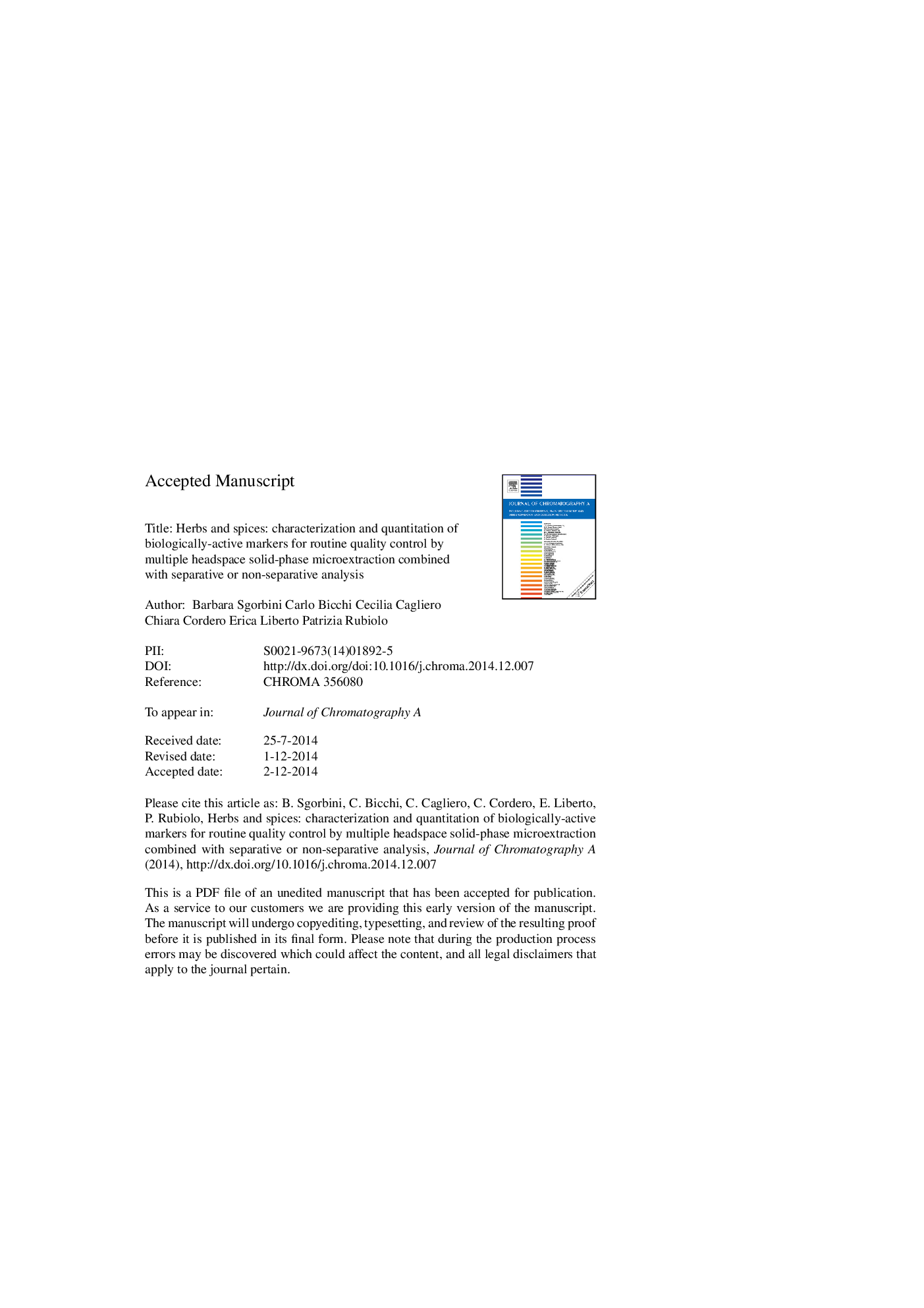| Article ID | Journal | Published Year | Pages | File Type |
|---|---|---|---|---|
| 7612098 | Journal of Chromatography A | 2015 | 30 Pages |
Abstract
Herbs and spices are used worldwide as food flavoring, thus determination of their identity, origin, and quality is mandatory for safe human consumption. An analysis strategy based on separative (HS-SPME-GC-MS) and non-separative (HS-SPME-MS) approaches is proposed for the volatile fraction of herbs and spices, for quality control and to quantify the aromatic markers with a single analysis directly on the plant material as such. Eight-to-ten lots of each of the following herbs/spices were considered: cloves (Syzygium aromaticum (L.) Merr. & Perry), American peppertree (Schinus molle L.), black pepper and white pepper (Piper nigrum L.), rosemary (Rosmarinus officinalis L.), sage (Salvia officinalis L.) and thyme (Thymus vulgaris L.). Homogeneity, origin, and chemotypes of the investigated lots of each herb/spice were defined by fingerprinting, through statistical elaboration with principal component analysis (PCA). Characterizing aromatic markers were directly quantified on the solid matrix through multiple headspace extraction-HS-SPME (MHS-SPME). Reliable results were obtained with both separative and non-separative methods (where the latter were applicable); the two were in full agreement, RSD% ranging from 1.8 to 7.7% for eugenol in cloves, 2.2-18.4% for carvacrol + thymol in thyme, and 3.1-16.8% for thujones in sage.
Keywords
Related Topics
Physical Sciences and Engineering
Chemistry
Analytical Chemistry
Authors
Barbara Sgorbini, Carlo Bicchi, Cecilia Cagliero, Chiara Cordero, Erica Liberto, Patrizia Rubiolo,
